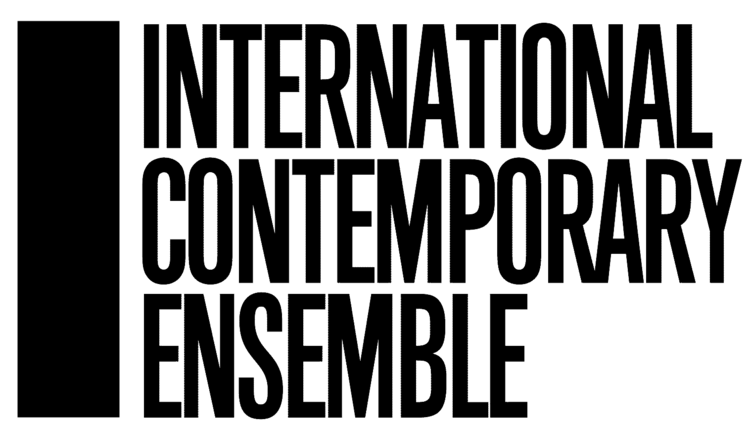By Jacob Greenberg, piano, ICE Director of Recordings and Digital Outreach
The Berkshires are looking fine today, even in heavy rain. For the last week, I've been a guest at Tanglewood in Lenox, Massachusetts, the summer home of the Boston Symphony and the site of the distinguished Tanglewood Music Center, a graduate-level fellowship program for singers and instrumentalists. I'm an alumnus of the TMC, and this year I was invited to be a curator for the annual Festival of Contemporary Music, which for the last few decades has featured a generous helping of composers, mostly American, over five days of programs. The other curators are violist Nadia Sirota, who played wonderfully on the recent ICE Marcos Balter disc, and Kathryn Bates, the cellist of San Francisco's distinguished Del Sol Quartet.
What better opportunity to bring all your friends and trusted colleagues to such a prestigious venue? There will be a sizable contingent of ICE folks here, including some members of the group and some of our favorite composers. I'm performing also, which unfortunately means that I can't take part in ICE's Mostly Mozart. But there will be plenty to do with the Tanglewood festival. My concert is on Thursday, August 10, at 8 PM. For ICE fans who are interested, you can come and still get back to New York to see The Dark Mirror at Lincoln Center's Rose Theater!
Each of the curators was entrusted to build a chamber music program with a particular focus, and my program will feature keyboards and voices. There are two premieres on this concert, by Anthony Cheung and Nathan Davis. Anthony's piece, All thorn, but cousin to your rose, is for voice and piano, and it's a hilarious setting of various texts and poetry by Vladimir Nabokov, all about the impossibility of literary translation. It ends with a passage from Nabokov's own translation of Pushkin's Eugene Onegin. The Sand Reckoner, Nathan's work, is for six solo voices and obbligato celeste, with electronics—an unusual combination of forces by any measure, and Nathan brings out the beauty and strangeness of it. The piece sets texts by Archimedes on early hypotheses of measuring the grains of sand on the seashore; this leads to a wider discussion of ancient cosmology. Nathan also provides commentary through passages from the Wycliffe Bible and William Blake, both of which deepen the exploration of the central metaphor of sand and the vastness of the universe.
The rest of the program has many pieces that I first got to know through ICE. Phyllis Chen will join me here for her Chimers, first played by ICE at Mostly Mozart. Yesterday morning, I set up the piece for the Fellows that are performing it, and coached the session. I also brought Phyllis's unique instruments up to Tanglewood from New York: a toy piano, a set of toy piano tines (metal bars), a toy glockenspiel, and a tiny Radio Shack speaker, which is crucial to the sound of the piece. The Fellows quickly took to the piece, and learned one of the key elements of an ICE chamber performance: how to conduct internally within the group. We practiced the elusive art of head-conducting, which emulates conducting patterns while the players still look forward and play their instruments.
I take for granted things that are second nature for members of ICE. Leading and following from within a chamber group takes skill, insight, and a lot of patience. One of the heavier pieces on my program, Sofia Gubaidulina’s Meditation on a Bach Chorale, needs actual conducting, passed among members of the group, to make the piece’s very slow pulse felt by everyone. When ICE played this piece at Mostly Mozart a few seasons ago, we arrived at the conducting system by trial and error; I tried to save time with the Fellows by prescribing a plan, but with the aim of making the leading and following organic to the piece’s expressive shape. I’ve also coached the harpsichordist to make the most of the Tanglewood harpsichord’s registration, coupling the manuals when necessary and seeing what interesting combinations of strings are possible.
Tony Arnold, my frequent song recital partner and a member of ICE, has been on the Tanglewood faculty this summer, and she has been actively advising some of these pieces. Tony is an expert on the vocal music of György Kurtág; she and I worked together with Kurtág when he coached us at the Darmstadt Summer Courses. Kurtág, a brilliant and intuitive pianist, knew what he was doing when he wrote for piano and voice. The textures, always transparent yet thorny, illuminate the tortured world of the poetry: here, it is Dostoevsky and ancient religious inscriptions. The tenor and baritone that are singing these songs have already undergone quite a journey, working with Kurtág's unique notation, and warming to the hyper-sensitive, concentrated expression that defines the composer's work.
George Lewis, whose album The Will to Adorn ICE released in January, is represented by his amazing piece Anthem, for voice and small ensemble with sound playback. Kate Soper, who premiered the piece with the Wet Ink Ensemble, will be singing; the rest of the players have thrown themselves into the fray with abandon. George’s piece involves the fifth keyboard instrument that I’m using on this program, a sampler that triggers electronics that are both atmospheric and comic. Also, ICE saxophonist Ryan Muncy joins me here just to play this piece!
It will be a delight to see so many of the composers here and watch as they assist to bring their creations to life in this beautiful setting. It feels good to bring so much of what I've learned in ICE about repertoire and performance practice to a crop of younger, extremely talented performers. If one is going to be away from ICE for a short while, Tanglewood is a pretty good place to spend the weeks of the late summer.
